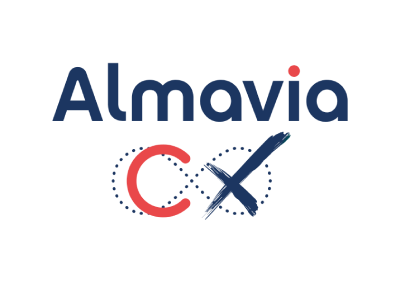Your business specific
The design of a digital interface in accordance with user expectations should be a matter of course when developing a new web, mobile, or desktop application. All types of applications are potentially concerned: showcase site, e-commerce platform, extranet, intranet, apps, and web apps, digitalized point of sale, or business application. And when the company starts from an existing one whose ergonomics and design have aged, it is a question of carrying out a partial or complete graphic and ergonomic redesign. Sometimes, we may even want to add new functions or sections, while maintaining coherent navigation.
By improving user comfort and satisfaction, a well-designed interface naturally increases conversion rates and the level of engagement of customers and prospects, or the degree of collaboration among employees. But a user-centric design can respond even more directly to the company's sales and marketing challenges, for example by making it easier to trigger sales or gather information.
When a user arrives on a site or app, we have only a few seconds to catch his attention and finally hold him (or not!). Beyond a neat digital interface, we will look for the wow effect that touches or amazes the user and that he will remember.
Wow effect, okay, but the company must not give in to trend's effects or get stuck on preconceived ideas. For example, yes, the burger is popular, no, it is not relevant in desktop mode and is not even essential in mobile mode. Yes, a click on the logo of a site allows you to return to the home page, no, not all users know this. When it comes to ergonomics, innovation has its limits. Certain rules and conventions have to be respected and we avoid reinventing the wheel. A user test often puts an end to the debate.
A UX/UI approach must allow us to adapt ergonomics to different types of devices - desktop, web, mobile. The responsive design or the declination of the application into a mobile version then requires a specific effort of ergonomic study. The same applies to accessibility, which requires the adaptation of size and contrast parameters. A UX/UI approach must also integrate SEO requirements, particularly in terms of markup. On the other hand, one cannot free oneself from the technical constraints imposed by the tools, which one must try to reduce or be aware of. Some SMD and DXP are thus not completely compatible with UX models (wireframes). And many eCommerce platforms impose a certain path.
What do we do
Audit & Benchmark
UX Research
- Realization of ergonomic sector or multisectoral Benchmarks to identify trends and best practices.
- Group or individual interviews and field observation in order to collect feedback on experiences, uses, and needs of different user profiles.
- Ergonomic audits in order to establish an inventory of an interface and identify design choices that do not conform to ergonomic standards.
- User tests to place a sample of users in a real-use situation and observe the reality of the customer experience.
- Quantitative studies in order to collect user feedback on a large scale and to measure significantly different aspects of the customer experience.
- Sorting of maps (and Treejack) in order to have the user vision to structure the information architecture, define (or validate) a tree structure and its semantics
- Field observation and analysis of the activity to understand the reality of the users' activity by considering the whole ecosystem in which they evolve.
UI graphic models
- Graphic translation of the ergonomic bias of UX wireframes, working on the look & feel and the emotional and identity layer of the interface.
- Creation of the new visual identity.
- Application of style guide in compliance with UX recommendations.
- Transmission of the UI guidelines (typography, dimensions, colors...) to the development teams.
Tree structure and path
- Organization of the content and functionalities according to a tree structure.
- Identification and categorization of content.
- Definition of the interface's information architecture.
- Illustration of the navigation logic on the main usage scenarios, with user paths.
Dynamic prototyping and user testing
- Realization of a functional dynamic model designed to unfold the key customer paths and prefigure the final product.
- Simulation of the navigation and future interactions of the interface.
- Realization of a realistic rendering to submit a prototype to users.
- Realization of tests by putting a sample of users in real-life situations.
UX Wireframes
- Definition of the general ergonomics of the interface, schematic representation of the screen structure, specification of navigation, and interaction modes.
- Integration of user needs in the interface screens.
- Specification of navigation and interaction principles within the pages.
- Iterative approach with design workshops.


